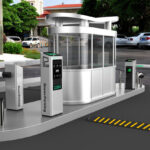Gamification is an emerging trend in the workplace. It’s been used by companies like Starbucks, SAP, Salesforce, and more. But what exactly is gamification? And how does it work in a corporate setting? Find out here!
What is Gamification?
Gamification can be used in a variety of settings, including businesses, education, and health care.
There are many different ways to gamify something. Some common methods include awarding points, badges, and leaderboards. Gamification can also involve giving users feedback on their progress, making the experience more social, and adding an element of fun.
When used correctly, gamification can be an effective way to improve employee engagement. It can help employees feel more connected to their work, increase motivation, and encourage collaboration. Additionally, it can improve retention rates and help businesses attract top talent.
There are a few things to keep in mind when implementing gamification in the workplace with the help of a tool like Zizo. First, it’s important to align the game with the company’s goals and values. Second, employees should be allowed to opt-out if they don’t want to participate. Finally, gamification should not be used as a replacement for good management; it should be used as a supplement to other engagement strategies.
Common benefits of Gamification
There are many benefits of gamification, but some of the most common benefits include:
1. Increased employee engagement and motivation:
Gamification can provide employees with a sense of accomplishment, as well as an incentive to continue striving for better results.
2. Improved communication and collaboration:
Gamification can help break down silos by encouraging collaboration and communication among employees.
3. Enhanced problem-solving skills:
Games can teach employees how to think critically and solve problems.
4. Greater creativity and innovation:
Gamification can inspire employees to come up with new ideas and solutions.
5. Increased productivity and efficiency:
Gamification can help employees focus on their tasks and stay motivated to complete them.
6. Improved customer satisfaction and loyalty:
Gamification can help employees provide better customer service, which can lead to improved satisfaction and loyalty.
8 Examples of Gamification in the Workplace
There are many ways to gamify the workplace to increase employee engagement. Here are a few examples:
- Offer rewards for employees who reach certain goals. This could be anything from a bonus to extra vacation days.
- Create a leaderboard that tracks employees’ progress toward goals. This will create friendly competition and motivation to do better.
- Recognize and celebrate employee achievements by awarding them badges or digital trophies when they reach significant milestones or accomplish noteworthy tasks. These accolades could be tied to company values, personal goals, or any other criteria you find significant, just like a trophy store offering a range of options to commemorate success.
- Allow employees to level up as they accomplish more tasks and reach higher levels of productivity. This could come with additional perks and privileges, such as access to exclusive training or early access to new products or services.
- Implement a points system that employees can use to redeem rewards, such as gift cards, paid time off, or even company merchandise.
- Have regular challenges with prizes for the winners. These could be based on individual performance, team performance, or anything else you can think of.
- Give employees access to a virtual world that they can explore and complete tasks in. This could be used for training purposes or just for fun.
- Use gamification to crowdsource ideas from employees on how to improve the company or solve problems. This could be done through online forums, polls, or other platforms.







